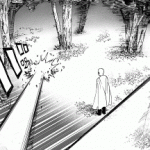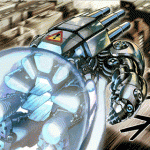Historically, one’s possessions were depicted in oil paintings to display one’s riches as the paintings would entice potential spouses. Oil paints are used for they have the ability to create texture and communicate wealth. The medium of graffiti signifies rebellion as it began as a medium to make a statement against those in power. By defying laws and defacing properties of the wealthy messages are sent through the medium as well as the statement sprayed on the walls.
Graffiti or street artists? One label implies an illegal activity and the other legitimizes their work.
Graffiti artists deface public or private property with a tag, a practice that originates from teenagers without parental authority and with an underdeveloped prefrontal cortex. Tags that are carelessly thrown onto walls are often used by gangs to show their presence in the community and to define their territory. Is graffiti an illegal activity due to the oppressors in society censoring speech or is it because it is disrespecting property? Perhaps the disobedience to the law by spraying a message on the wall creates the negative connotation that is associated with it. As tags are used to promote gangs and further illegal activity, it may be the reason for the ban of them.
Street artists are often fed up with the system and are done waiting for approval of art critics create their own gallery through street art. There are two motives behind street art, one is to achieve individual fame and the other is to make a political statement. Either way, the images are of significance and depend on the audience’s interpretation. Street art is meant to create a dialogue between the artist, those who enjoy or despise the art and then there are others artists who respond. As walls are tagged, the artist is marking their territories and begin a conversation. Whether a symbol or a word is thrown onto the wall, another artist will respond with their own statement. As the original image provokes responses, the responses begin to provoke responses. Some may pass by without declaring their input in ink but those who do build an even more complex message. The bystander who admires the work may take a picture and distribute the image to others in honor of the artist. Those who do not enjoy the piece whether it be for legality issues or is irked by the image itself is included in the dialogue nonetheless.
The element of anonymity in graffiti or street art allows the artists to take on other personas. The potential risk of being arrested when doing what they love drives up the artists’ levels of endorphins. The satisfaction of seeing other’s appreciation for the piece for itself and not due to the artist’s brand would be an experience like no other. There is also an element of pride as one’s work is genuinely created for oneself and does not seek the approval of the critics or gallery executives. Street art is a means to make an anti-authoritarian statement and to gain personal satisfaction from bringing one’s art to the public without the politics that are associated with it.
As there are multiple ways to view art, Berger encourages one to look beneath the surface and images to study the material and connotations. Oil paintings indicate the hierarchy in a society of those who can afford the paint and the time of the artists. Graffiti paint is a medium that the oppressed choose to send a message as the cans of paint can be bought with mere pocket change. As there are multiple techniques required to spray an image, it is relatively quicker and easier in comparison to the textured portraits done with oil paint. The mediums themselves represent the class of where the messages originate.


